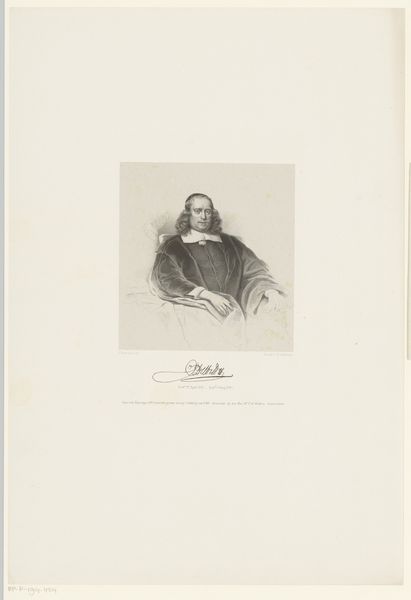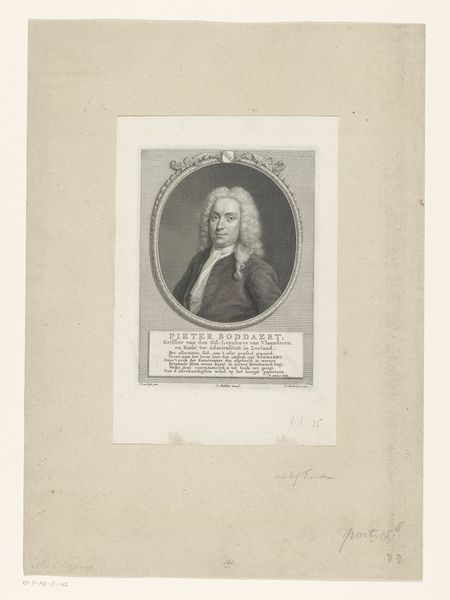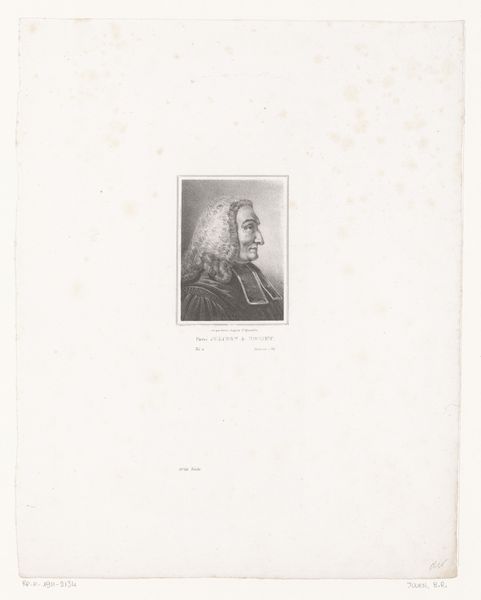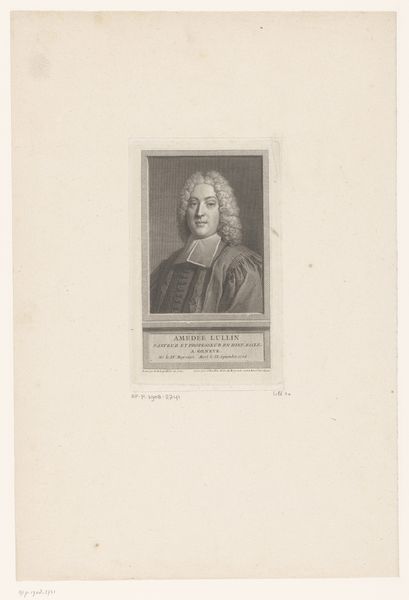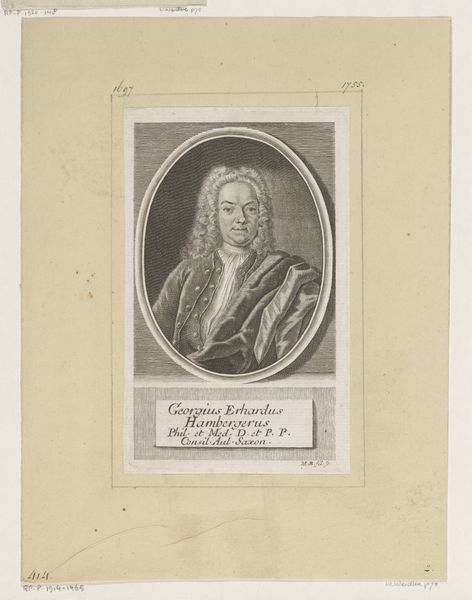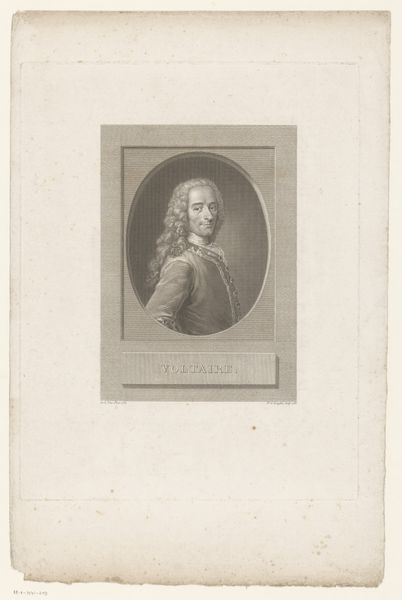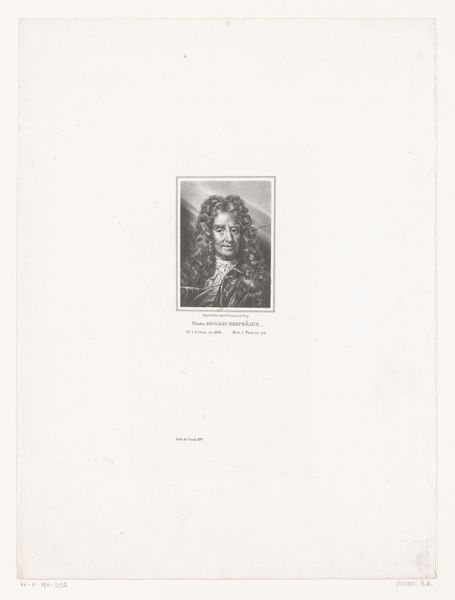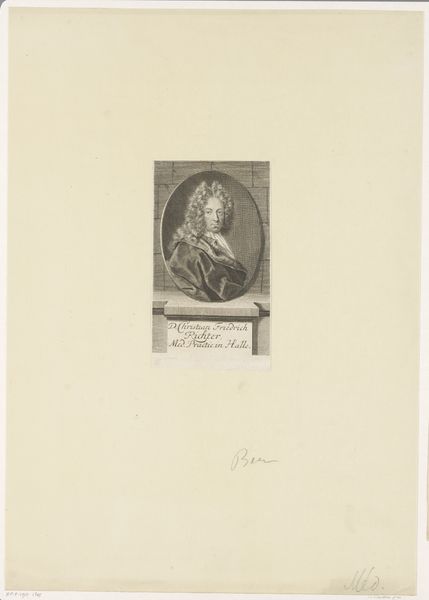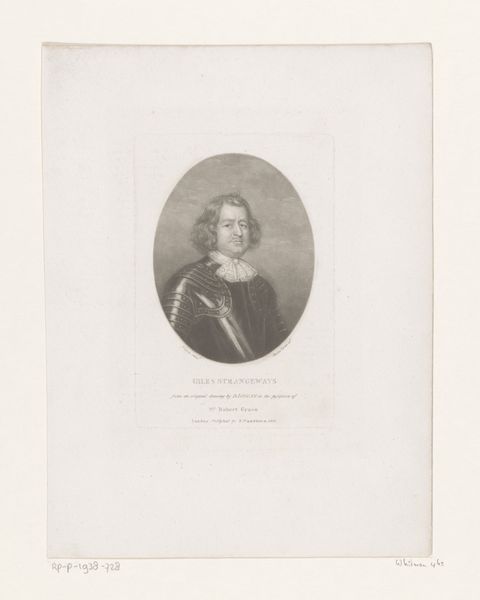
Portret van Jacob van Wassenaer heer van Obdam 1833 - 1863
0:00
0:00
franciscusbernarduswaanders
Rijksmuseum
Dimensions: height 448 mm, width 310 mm
Copyright: Rijks Museum: Open Domain
Editor: So, here we have a print titled "Portret van Jacob van Wassenaer heer van Obdam," created between 1833 and 1863 by Franciscus Bernardus Waanders. It's an engraving on paper of a baroque-style portrait. It's intriguing, but I find myself wanting to know more than just the face of this historical figure. What strikes you about this piece? Curator: Well, as a materialist, I'm drawn to the engraving itself. Consider the labor involved: the skilled hand meticulously etching lines into the metal plate, the mechanical press transferring that image onto paper. It’s not just about representing Jacob van Wassenaer; it's about the entire social and technological process that makes such a portrait accessible. Think about who had access to these prints. What social strata could consume these images and how did it shape their view of power? Editor: That's a really interesting perspective! I hadn't considered the impact of the printmaking process itself. It makes me think about mass production and how portraits could circulate and shape public opinion. Was this intended to be a tool of power? Curator: Precisely! How might such readily available reproductions affect the reception of art and influence the relationship between the sitter and their audience? Also, consider the Baroque style. It served as a key tool for those in power, which reinforces its propaganda potential. Editor: So it is also interesting that they selected that style knowing that? And focusing on its material reality is a unique way of looking at something seemingly traditional. It brings to light questions about access, labor, and how images shape society. I definitely have a new appreciation for engravings now.
Comments
No comments
Be the first to comment and join the conversation on the ultimate creative platform.

